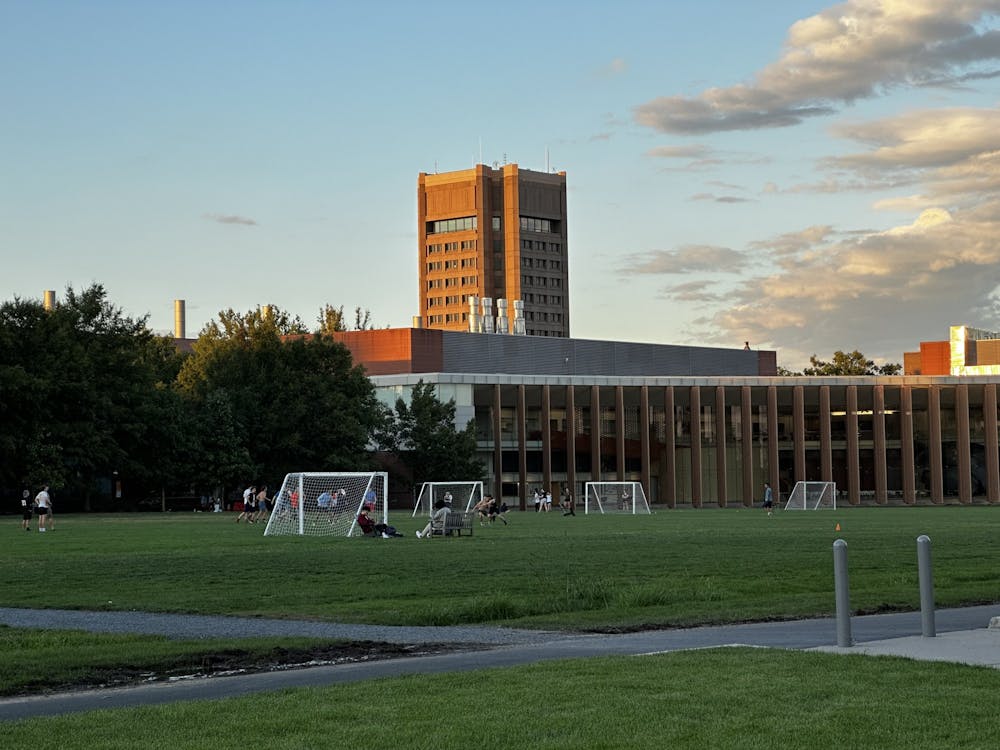After history professor emerita Nell Painter saw a New York Times cover depicting the Russian bombing of Grozny, the North Caucasus-located capital of Chechnya, she wondered why white Americans were called Caucasians. After spending a semester in Germany finding out, Painter wrote “The History of White People” in 2010, discussing how formerly non-white people were classified as white through their assimilation into American society.
Painter is often referred to as a historian first and a painter second. Noting the sharp divide between art and history, she explained her interest in the two subject areas.
“It’s scholarship versus art,” Painter said. “[In history], my aim is for the reader to understand what I’m thinking. I was making the meaning, not the reader. But in art, the viewer makes the meaning. The aim is not so much clarity, but interest.”
Despite the differences between the two subject areas, Painter combined art and history in her two art history books. She continues to make art and believes that an artist does not need to wait for inspiration to strike in order to create, as long as there is interest and inclination.
“I feel that as a professional, I need to make art whether I feel like it or not,” she explained.
Painter first started teaching at the University in 1988 as a professor of history. She eventually took a 10-year break from teaching but was invited back to the University by Eddie Glaude GS ’97, head of the African American Studies department, to teach a course this fall.
The interdisciplinary course is called AAS 347: Art School at African American Studies: Process, Discourse, Infrastructure, in which Painter combines art making with art criticism and an examination of contemporary art, particularly the works of black artists. The course is fundamentally based on art concepts, but the art that students create is intertwined with African American history.
“We are doing it from the point of view of black artists,” Painter explained. “What are the issues of interest to black artists?”
Painter defines black artists as artists of African descent working in the United States. She believes that, in general, black artists tend to have a stronger interest in making social commentary through their art than non-black artists.
“People of color generally have the same interest in commenting on society, as a critique. And in the art world that is a problem, because generally the art world just wants – you can call it art for art’s sake. So art that is problematic or that has a point of view is very often just brushed aside as illustration,” Painter said, explaining that “illustration” is considered lowbrow compared to “fine art,” which is highbrow.
Painter currently has two students in her seminar and makes art with them on their studio days. Dallas Nan ’16 and Lorenzo Laing ’16 are both invested in creating political art. At the beginning of the semester, Painter asked Nan and Laing to bring in images that were of interest to them. The images then acted as the “program” for their artwork. Nan’s image concerns the gentrification of a slum in the Philippines and Laing’s is of a demonstration from Ferguson.

“They are both programmatic bodies of work,” Painter said. “So in that way, they are very much African American artists.”
Painter explained that the course is its own reward for her students because they are able to work like artists. The subtitle of the course is “Process, Discourse, and Infrastructure”; making art is the process, reading art history, art criticism and engaging with the texts is the discourse, while visiting museums and galleries is the infrastructure.
“Professor Painter’s expertise in not only art and art history, but also history, allows for vivid discussions during class and invaluable contextualization that allows one photograph or painting to become an inspired and impactful narrative,” Nan said, noting the benefits of the course’s interdisciplinary approach.
Nan and Laing’s works are currently on display at 185 Nassau St. and will be exhibited in Newark when the course ends.
Painter noted that, starting out, she had no idea what kind of art her students would create, but that she is very excited about the level of investment that they have shown.
“I am really enjoying being back at Princeton,” she said. “Mostly, I enjoy the high level of intellectual engagement.”







